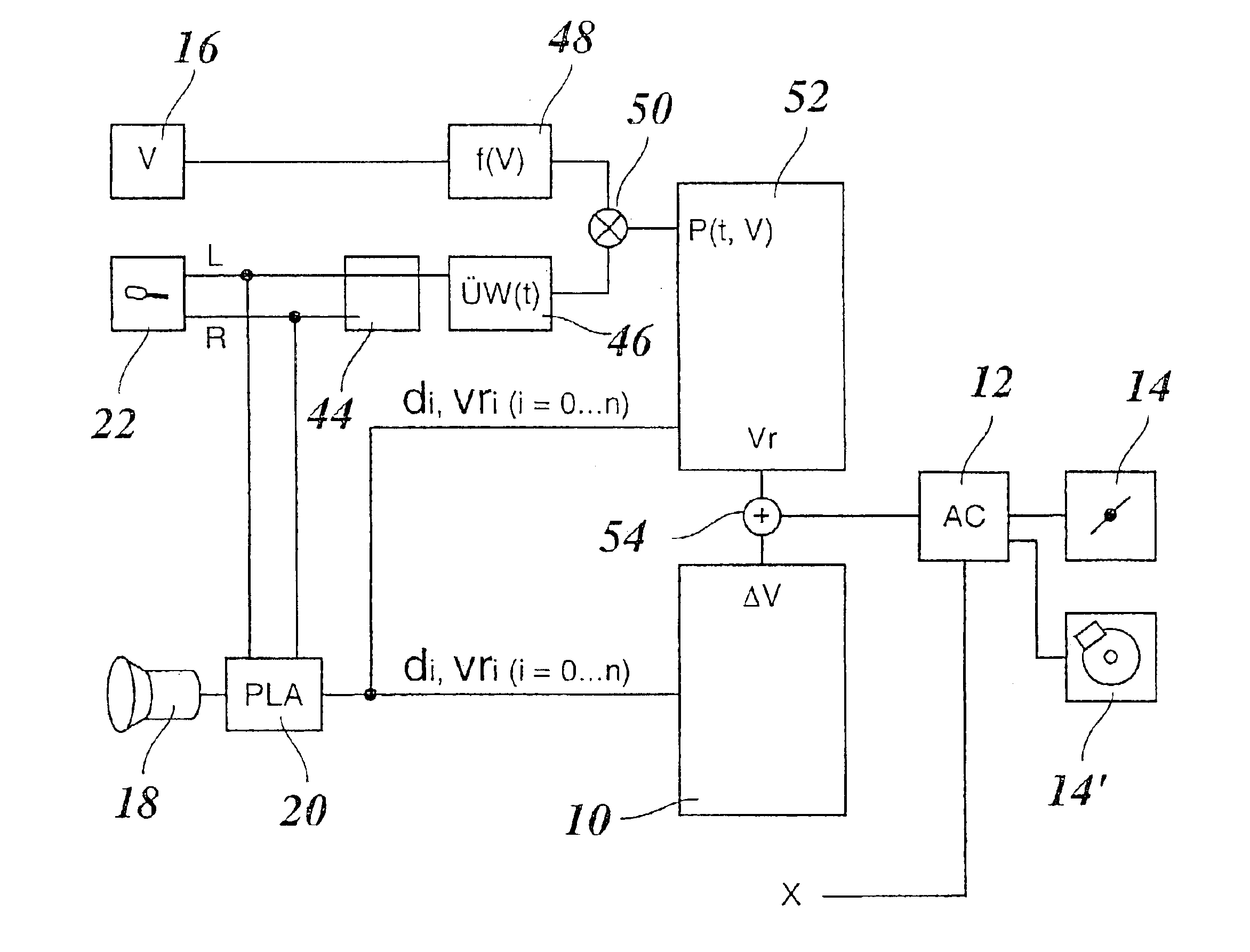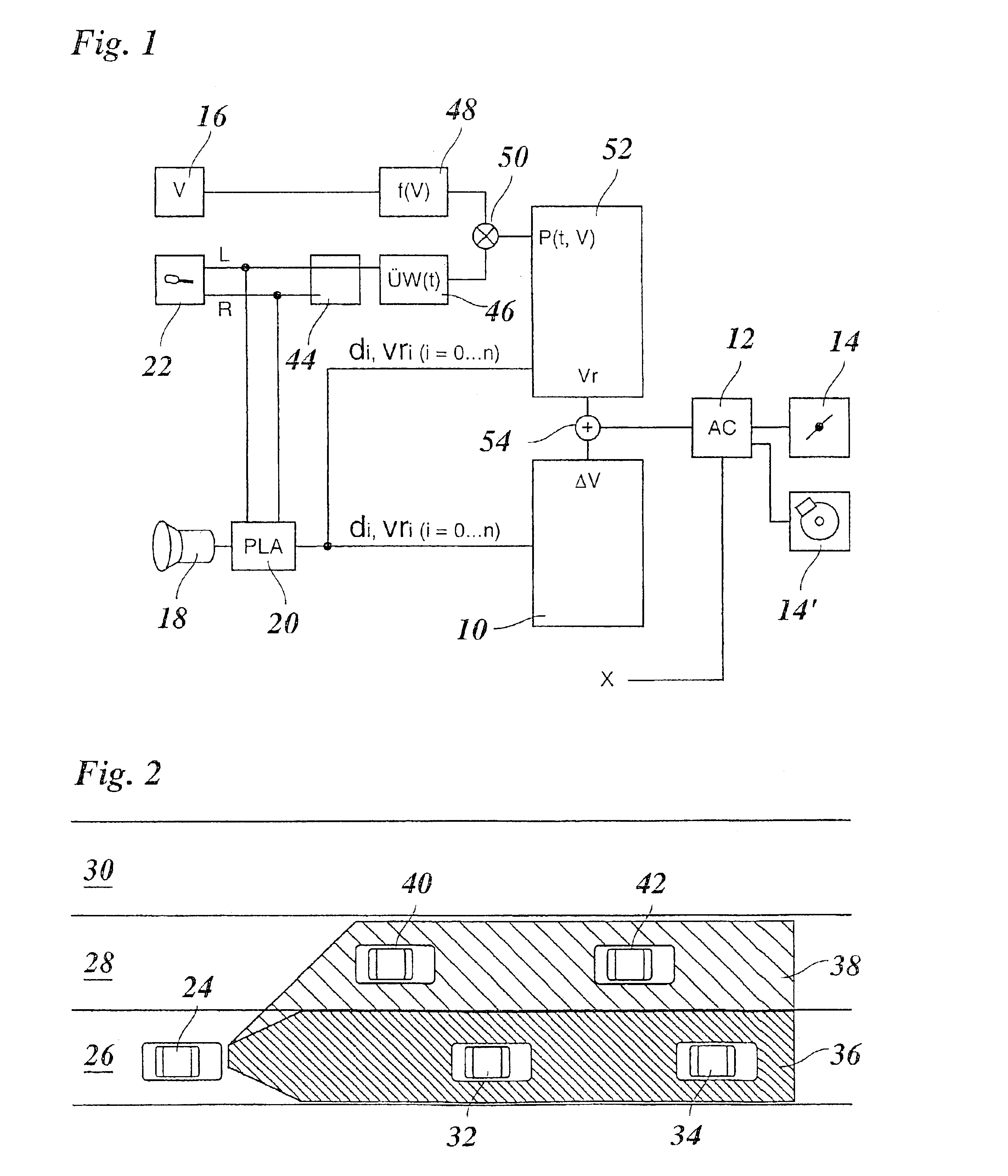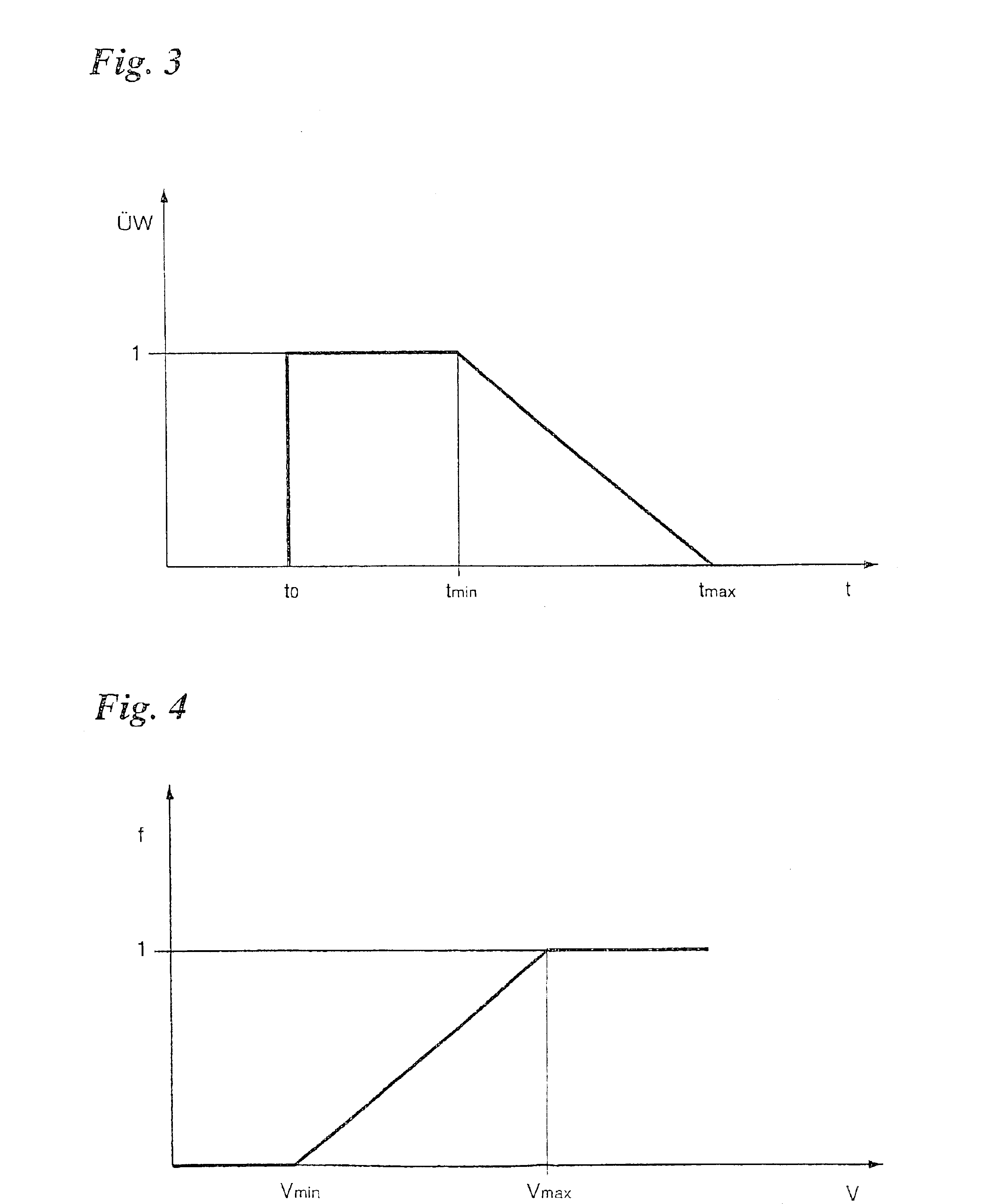Method and device for assisting in a passing maneuver for motor vehicles
a technology of motor vehicles and passing maneuvers, which is applied in the direction of reradiation, pedestrian/occupant safety arrangements, instruments, etc., can solve the problems of increased fuel consumption, system may not react appropriately in all traffic situations, and may even affect traffic safety, so as to reduce the effect of fuel consumption
- Summary
- Abstract
- Description
- Claims
- Application Information
AI Technical Summary
Benefits of technology
Problems solved by technology
Method used
Image
Examples
Embodiment Construction
FIG. 1 shows components of an ACC system, that is, of a distance-control and speed-control system for vehicles, which aid in understanding the present invention. A conventionally constructed steady-state controller 10 acts, via a driver 12, on the drive system and brake system of the vehicle, which are symbolized here by a throttle valve 14 and a brake 14′, and regulates the distance of the vehicle to a preceding vehicle.
An angle-resolution radar system 18 is used to detect obstacles in front of one's own vehicle on the roadway or at the edge of the road. Radar system 18 supplies direction and distance information which may be evaluated in a plausibility module 20. Information about the relative speeds of the detected objects may be acquired, for example, either by derivation from the distance information, or directly from the Doppler shift of the radar echo. Based on this information, plausibility module 20 is able to distinguish between preceding vehicles or other obstacles in the...
PUM
 Login to View More
Login to View More Abstract
Description
Claims
Application Information
 Login to View More
Login to View More - R&D
- Intellectual Property
- Life Sciences
- Materials
- Tech Scout
- Unparalleled Data Quality
- Higher Quality Content
- 60% Fewer Hallucinations
Browse by: Latest US Patents, China's latest patents, Technical Efficacy Thesaurus, Application Domain, Technology Topic, Popular Technical Reports.
© 2025 PatSnap. All rights reserved.Legal|Privacy policy|Modern Slavery Act Transparency Statement|Sitemap|About US| Contact US: help@patsnap.com



